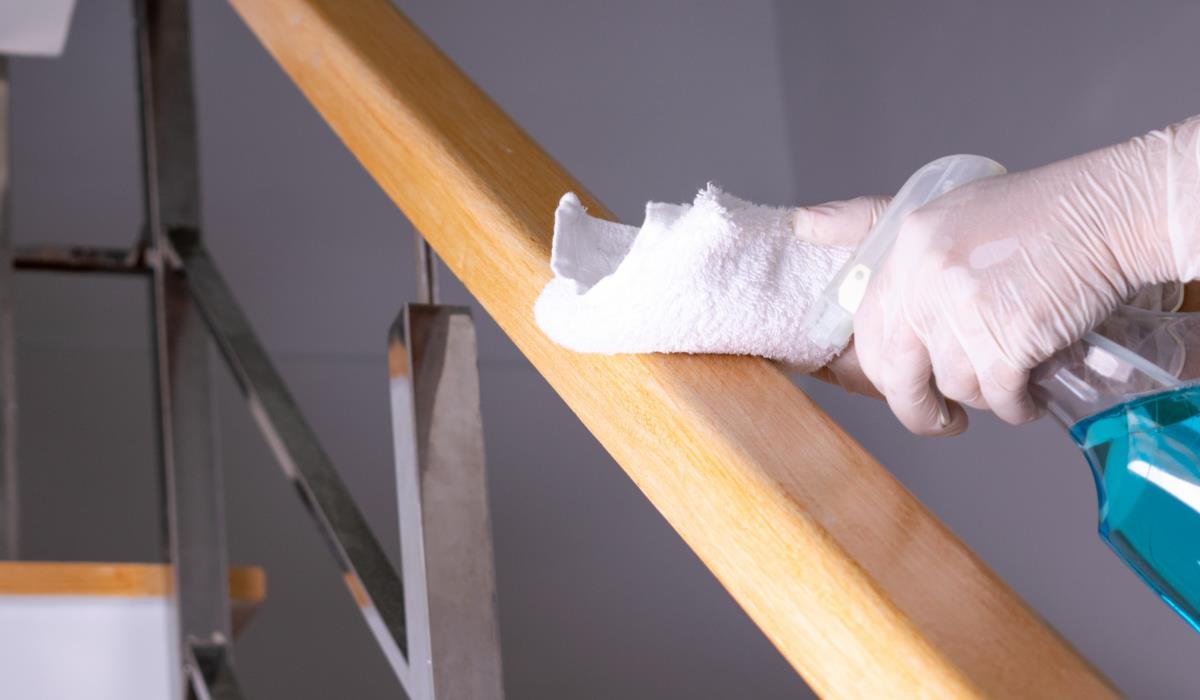Skillful painting of wooden handrails creates a durable finish that is easy to clean and lasts longer. It is important that the wooden handrail is properly coated to ensure its strength.
When climbing stairs, everyone naturally rests their hands on the railing, so painting them requires a paint that will allow frequent cleaning and at the same time will be durable. When painting wooden handrails, surface preparation is often the key to a professional finish. The wood must be well sanded, smooth, without sharp edges and clean, without wood dust residues. It is worth spending a little more time on preparation, often longer than on painting itself.
How to paint a handrail: step by step
Before you start cleaning the railing, make sure you have plenty of fine sandpaper to help get the best finish.
1. Secure the area
If the stairs are carpeted, you don’t want the paint getting on it. So make sure you put a protective film or protective fabric along the entire length of the stairs. If you are not painting the ribs, use painter’s tape to protect them.
2. Washing and cleaning

If you’re repainting a wooden railing, it’s a good idea to clean it with a cleaning soap before sanding. This will help remove any dirt and grime. If you’re wondering what cleaning soap is, our guide will help you figure out how and where to use it.
3. Grinding
Whether you’re painting a brand new, untreated wooden handrail or a previously painted one, you need to sand it down. The new wooden handrail just needs a quick sanding with 220 grit sandpaper to get rid of sharp edges and ensure better paint adhesion. If you are painting an untreated wooden railing that has had the paint removed, use 120 grit sandpaper first, then 220 grit sandpaper. If the handrail has been previously painted, use 180 grit sandpaper to smooth out any irregularities, then 220 grit sandpaper to finish sanding.
4. Primer
If you are painting an untreated wooden handrail, the first coat should be a primer. Use a brush 5-7 centimeters wide to paint larger areas of the handrail. Start at the top of the handrail (usually the top of the stairs) and the outer edge – this is the side of the handrail facing the stairs. Then paint the top, inside edge and bottom of the handrail. Paint in sections so you have a wet spot to mix the new section. If necessary, use a smaller brush for more intricate areas. Allow to dry according to the manufacturer’s instructions. Then use fine 220 grit sandpaper and rub gently.
5. Painting

Remember to apply thin layers for a more durable finish. Apply one coat of primer, allow to dry as directed, sand with 220 grit sandpaper to avoid bubbles, wipe with a clean damp cloth and allow to dry, then repeat the process. Once the second coat of primer is dry – not too soon – apply the top coat. Let dry and decide if you need another top coat. We recommend applying a second coat for greater durability.
Can the railing be painted by spraying?
Yes, if you want a uniform coat of paint with a smooth, factory-like finish. Spray painting is not difficult, but it does require some practice before painting the handrails.
What kind of paint to paint the handrails?
If the handrail is in a high-traffic area and will be touched a lot, especially by small dirty hands, you want a durable satin or gloss paint. If you want a high-gloss finish, use the glossy version of the paint. Otherwise, if you want a low-gloss finish, consider using a water-based enamel paint. They are better suited to areas that will not have as much traffic. The benefit of water-based paints is a much shorter drying time.
Wooden handrail – the best color

This is a very subjective choice. White is the most popular choice as many topcoats are only available in this edition. You can also find a style where the handrails and rabbets have other contrasting colors.
Painting after varnish or stain
Technically yes, but not recommended. Handrails will be touched regularly, so they need a hard-wearing and easy-to-clean finish. Painting directly on the paintwork will look good, but not for long. It is not permanent and will start to peel away from the painted surface very quickly or can easily be removed when hit. Ideally this needs to be sanded well down to bare wood before painting.



